How to Start Affiliate Marketing in 2024: 8 Steps to a Successful Affiliate Business
Affiliate marketing offers a flexible and low-risk opportunity to earn money online. With the proper techniques and strategies, you can develop a successful online business with affiliate marketing in no time.
This guide will equip you with essential knowledge for starting your affiliate marketing journey. We’ll share insights into effective affiliate marketing efforts, from selecting a niche to setting up a website and monitoring performance.

What is Affiliate Marketing?
Affiliate marketing is a business model where people become affiliates to promote a company’s products or services for a commission. It’s a win for both sides – affiliates earn income without creating products, while businesses expand their reach through affiliate promotion.
How Does Affiliate Marketing Work?
Being an affiliate is similar to being a salesperson for a company. In short, here’s how affiliate marketing works:
- Sign up for an affiliate program offered by a company or an affiliate network.
- As an affiliate partner, you’ll get unique links to promote affiliate products or services.
- Share these clickable affiliate links on your website, blog, YouTube video descriptions, and social media accounts.
- When someone completes the company’s desired action, such as clicking on your unique affiliate link or making a purchase, you will earn a commission.
- The company tracks the activities and sales through your unique links, ensuring you get referral credits to claim your commission.
Important! Affiliate marketing and dropshipping are two different business models. Their main differentiating factors include product handling, profit model, and control over pricing.
Types of Affiliate Marketing
Based on the level of association with the product promoted, here are three main types of affiliate marketing:
- Unattached affiliate marketing. Affiliates earn commissions by displaying banner ads, regardless of niche. For example, a fashion blog with gym product ads.
- Related affiliate marketing. Focuses on promoting products that align closely with an affiliate’s area of expertise or niche. Affiliates use their knowledge and authority in their field to recommend relevant affiliate products to their audience.
- Involved affiliate marketing. Requires sharing personal experiences and the benefits of using the advertised product. This firsthand knowledge allows affiliates to provide detailed insights and authentic recommendations, which can be more persuasive.
Types of Payment in Affiliate Marketing
Different payment models can affect how much an affiliate earns. Knowing which model suits your traffic and content style can help maximize earnings and reach the company’s marketing objective.
Here are the primary methods of payment in affiliate marketing:
- Pay-per-sale. Get a percentage of the product price from each purchase through a unique affiliate link. Companies choose this method to align with direct sales objectives.
- Pay-per-lead. Earn commissions based on lead conversion. For instance, when affiliates successfully convert potential customers into creating a trial account or subscribing to a newsletter.
- Pay-per-click. Calculates commissions based on the traffic brought to the merchant’s site. The more users click on the affiliate link, the higher the payment. This method mainly helps companies improve brand awareness.
Why Should You Start Affiliate Marketing
Affiliate marketing is a win-win solution for merchants and affiliates.
For affiliate marketers, this online business model helps generate revenue and provide readers with the best recommendations. For businesses, it helps improve brand awareness and attract new customers.
Here are additional reasons for starting affiliate marketing:
- Low-cost. Unlike starting an online store, you won’t have to worry about product development, maintenance, and shipping. You only need to prepare a few upfront costs to create an affiliate marketing website.
- Low-risk. In addition to no penalty fee for unsuccessful sales, there’s no risk associated with inventory management or logistics.
- Scalability. There is no limit to scaling your affiliate marketing business. You can introduce new products while the existing affiliate content continues to generate profit. Also, you can sign up for a different affiliate program to increase your income.
- Sustainable income stream. Affiliate marketing can help you earn a steady passive income. Investing time to establish promotional platforms, build an audience, and create traffic sources is necessary for maximum success.
How to Start Affiliate Marketing
In the following sections, we’ll walk you through affiliate marketing strategies for newcomers.
1. Decide on a Niche
The first step in any successful affiliate marketing strategy is to select a niche – a segmented target market or audience.
A market niche is typically characterized by a shared interest or demographics, influencing product quality and price point. For instance, the skincare industry’s niches include skin care for teens, anti-aging, or specific conditions like eczema.
When starting out, we recommend targeting a small market segment rather than trying to follow trends or appealing to an entire industry. Establishing brand recognition, growing expertise, and building authority is easier when you start small.
Consider the following when selecting an affiliate marketing niche:
- Start with your passion or interest to make your affiliate marketing journey more enjoyable.
- Analyze competitors and determine your unique selling point.
- Assess market demand to ensure you choose a profitable niche. A quick research on Google Trends or Ubersuggest can help you check keyword popularity.
2. Create an Affiliate Website
Once you decide on a niche, the next step is creating a platform for your affiliate marketing campaigns. While there are many platforms to choose from, we recommend building your own affiliate website.
An affiliate site provides a central hub for all your affiliate marketing content, giving you more opportunities to highlight promotional materials.
You can also use a custom domain name to enhance your brand identity. The key is to pick a simple yet memorable domain name. For more tips, check out our article on choosing a good domain name.
Additionally, launching your affiliate marketing business on a website means having more control over the platform. You will be able to install any affiliate marketing tools to optimize your efforts.
Build a website quickly without coding with Hostinger Website Builder. It’s the perfect choice if you want to start a high-converting affiliate website without the hassle of technical setup and complex web design processes.

With our AI Writer, you can generate attractive promotional copy. Meanwhile, AI Heatmap lets you strategically place your unique affiliate links.
All Hostinger Website Builder users can also access built-in eCommerce features for free, making it an excellent choice for your affiliate business website.
The next step is to customize your affiliate marketing website. Here are four factors to consider when designing a website:
- Branding. Establish a unique brand identity for your affiliate website using a consistent color scheme, logo, and typography that resonates with your niche and target audience.
- Clear and compelling affiliate posts. Create valuable content by including in-depth explanations about the affiliate products or services. Use persuasive CTA to encourage readers to take action.
- High-quality visuals. Add high-resolution images, infographics, and videos to effectively engage users and convey information.
- Choose a user-friendly design. A clean and intuitive design streamlines navigation. Use a responsive layout to ensure your website looks great on all devices.
Explore other types of hosting plans to ensure you get the perfect hosting solution for your affiliate marketing business. Read stories from our customers and learn more about their experiences migrating their business websites to Hostinger.
3. Join an Affiliate Program
With a target audience in mind and a platform to start publishing content, it’s time to sign up for affiliate programs.
Simply research brands within your niche and see if they offer high-paying affiliate programs you can join. Alternatively, apply for an affiliate network to access various programs at once.
When choosing the best affiliate program, consider the following aspects:
- Cookie period. All affiliate sales are attributed to you through a tracking cookie attached to your affiliate links, which could last from one to over 30 days. Programs with a longer one provide more time to convince your audience to convert.
- Commission structure. Subscription-based businesses usually offer recurring commissions, letting you receive income for as long as the customer pays for the service. Others require you to generate a certain amount before sending the payout.
- Brand alignment and reputation. Check out online reviews, discussion forums, and social media conversations to evaluate merchants’ reputations. To ensure trust and interest, partner with brands that suit your content and audience group.
- Support. See if the affiliate program provides additional resources to help you market their product, such as visuals or workshops.
If your content covers the web hosting industry, our Hostinger Affiliate Program is an excellent choice. In addition to being a profitable affiliate program, we also offer extra assistance for affiliates through a dedicated affiliate manager.
To be eligible, you should have a website with high-quality traffic, a YouTube channel, or a solid social media presence. Ideally, your content should be relevant to hosting services and website creation.
Here’s the payment process for Hostinger affiliate marketers:
- The minimum payout is $100 via PayPal and $500 for bank transfers.
- Commissions are issued after the 30-day money-back guarantee period.
- To receive a payout, send an email request to payments@hostingermedia.com. Include your company name as listed in the Affiliate Dashboard and your PayPal email or bank details.
- Send requests by month-end, as invoices are generated on the first day of each month.
- Our Affiliate team will then review requests and issue approved commissions between the 15th and 20th of the following month.
Once you’ve decided on an affiliate program to join and which products to promote, it’s time to create content.
Pro Tip
Once you successfully promote an affiliate product and improve your online marketing skills, consider joining other programs to diversify your income streams.
Alternatively, if you don’t have a website or a blog yet, you can start earning money by joining Hostinger Referral Program. Get a 20% commission on each successful referral, while your referred friend or family member enjoys a 20% discount on their purchases.
4. Write Excellent Content and Drive Traffic to Your Affiliate Site
Creating valuable content that resonates with your audience is a must for an affiliate marketer.
A successful affiliate marketer prioritizes connecting and engaging with their existing audience to earn their trust. Poor content and careless affiliate link placements will not convert your audience into buying customers.
High-quality content can convince your existing audiences and boost your site’s performance on search results. A higher ranking increases the chance of attracting more organic traffic and new visitors.
Whether you’re creating YouTube video content, writing blog posts, or composing email newsletters, aim to produce original, informative pieces that address the audience’s interests and questions.
A good rule of thumb is targeting a specific, long-tail keyword since they are easier to rank than generic ones. Keyword research tools like Semrush or Google Keyword Planner can help.
Combine non-time-sensitive and trend-driven topics when creating content, ensuring brand relevance all year round. Here are some of the most common content types for affiliate sites:
- Product reviews. Understandably a popular content type amongst affiliate marketers since 90% of online buyers seek product reviews before purchasing.
- Product comparisons. Compare two similar products and explore their advantages and disadvantages to help the audience make a buying decision.
- Product roundups. Similar to product comparisons, a product roundup evaluates several products within the same category.
- Tutorials. Explain how to use products or services step-by-step. Customers are more likely to buy a product when they understand how they can use it to their benefit.
- Resource pages. Consisting of tools and resources to help solve the audience’s problems, this content type can further establish your authority as an expert.
- eBooks. This content type lets you go more in-depth about a topic. eBooks can also be a great lead magnet to expand your email list.
If you use Hostinger Website Builder, you can speed up writing using the built-in AI Blog Generator. Here’s how to use it:
- Click AI Tools → AI Blog Generator from the builder’s interface.
- Set the tone of voice and content length. Then, enter a short description to craft an SEO-ready blog post.
- Click Create content, and the tool will generate the blog post for you.
- To ensure its quality, add more valuable information and polish the article for accuracy, style, clarity, and grammar before publishing.
- Throughout the article, include the affiliate links in places where they make sense. Avoid stuffing the article with affiliate links, as this can lead to a poor user experience.
Important! For transparency and legal compliance, include an affiliate disclosure. It states that you earn a commission whenever people purchase using your affiliate link.
Once you have a good amount of published content, it’s time to drive traffic to your affiliate site. Doing so is necessary to generate leads, boost conversions, and attract potential customers.
Creating a search engine optimization (SEO) strategy is a must. The higher your site appears on search engines, the more traffic you’ll get. SEO includes keyword optimization, link building, and ensuring site responsiveness.
In addition to SEO, here are other methods to generate traffic to your affiliate business site:
- Start an email campaign. Email marketing helps gently nudge readers toward a purchase. Send newsletters from your business email address to communicate product recommendations, limited offers, and regular updates.
- Leverage social media platforms. Consider your audience demographics when choosing one. For example, Facebook users’ age group is between 25 and 34. Take advantage of this largest social media platform as your primary channel should it align with your demographic.
- Participate in online forum discussions. Online forums like Reddit and Quora are great for connecting with your target audience. Since most forums don’t allow affiliate links, redirect people to your blog posts or affiliate landing pages instead.
- Write guest posts. Reach out to sites in your niche and offer to write high-quality posts for them. It’ll help redirect audiences already interested in the topic to your site.
5. Track Your Affiliate Marketing Campaigns
Proper monitoring is essential for creating a successful affiliate marketing business.
If you’re a WordPress user who has joined the Amazon Associates program, the process includes adding Amazon affiliate links to your WordPress site, as well as tracking pages, links, and visual elements that get the most traffic and conversions.
While most programs provide affiliate sales data through the dedicated affiliate dashboard, you can use additional tools to optimize your campaigns. These tools will help keep track of your affiliate campaigns across different marketing channels and enhance your affiliate strategies.
MonsterInsights is an excellent plugin for reviewing traffic volume on individual product pages. Free tools like Google Analytics and Google Tag Manager can also help track affiliate links.
You can also integrate Pretty Links to set up redirects or link cloaking. It’s the practice of hiding the affiliate ID from a URL by redirecting it to another page. So, instead of a long, complicated URL containing numbers and characters like the example below:
www.youraffiliateprogram.com/?affiliateid=123qwerty*
You can make the affiliate link more visually pleasing and user-friendly:
www.yourwebsitename.come/affiliate-product
Cloaking affiliate links also helps prevent link hijacking, one of the most significant security risks in affiliate marketing. Link hijacking occurs when malicious parties try to steal valuable commissions by replacing your unique ID with theirs.
A cloaked affiliate link is more secure as it tells users exactly what to expect when clicking on it. It’s also easier to remember and share, which helps increase brand recognition and expand audience reach.
Some tools might also have additional features designed specifically for a particular associate program. For example, popular WordPress Amazon affiliate plugins commonly have API support that updates product information on your website automatically.
6. Boost Your Income
While the previous steps will help start your affiliate marketing career, there’s no guarantee it will generate affiliate revenue. Constantly optimizing your marketing efforts is necessary to increase affiliate income.
Running tests on your content is a great start. For example, identify which posts get high traffic but low RPM (revenue per thousand impressions). Then, tweak some elements to see what triggers more conversions and increases your affiliate income:
- Test your headlines. To evaluate their effectiveness, conduct A/B testing by creating two headlines for the same content. Split traffic into two groups, serve different headlines for each and see which one converts better.
- Experiment with images. You can conduct the same A/B test with two high-quality photos of the same product. Assess the results and feature the image that converts more.
- Insert comparison tables. Comparison tables for product features and prices are easier to digest than long blocks of text.
- Optimize the CTAs. Keep the calls to action brief and personalized. Use time-related words like “Shop Now”, “Limited”, or “Last Chance”, and pair them with a countdown timer to create a sense of urgency.
- Add exit intent pop-ups. These pop-ups are the last resort to prevent visitors from abandoning the site. Install a WordPress pop-up plugin like OptinMonster to incorporate this feature.
Learn How to Start Affiliate Marketing With Hostinger Academy
Learn how to start affiliate marketing from scratch and make passive income online.

How Much Money Can You Make as an Affiliate Marketer
The industry of affiliate marketing, worth around $15.7 billion by 2024, is a profitable business model.
However, as an affiliate marketer, your earning potential depends on your niche, products, affiliate programs, traffic volume, and audience size. A larger following increases your chance of generating more traffic and conversions.
The average affiliate marketer makes around $55,000/year, with the lowest tier earning about $41,000/year and the highest around $75,000/year.
Successful affiliate marketers like Pat Flynn may earn even more. The Smart Passive Income founder’s net worth is over $3 million.
Pro Tip
A thriving affiliate marketing website can be a lucrative investment. If you’re interested in flipping websites, learn to calculate how much your website is worth.
What Are the Best Opportunities to Help Affiliate Marketers Get Started?
Choosing the right merchants and products can be challenging, especially for beginner affiliate marketers. However, this step is crucial when getting started with affiliate marketing.
An easier way to be an affiliate marketer is by joining an affiliate network as an intermediary between you and brands. Here are some of the best ones:
- Amazon Associates. A globally recognized brand with over 365 million products to promote, the Amazon Affiliate Program is ideal for any affiliate marketers starting their journey.
- ClickBank. It is one of the oldest affiliate networks. It is perfect for marketers looking to advertise digital affiliate products.
- CJ. Since it provides access to affiliate programs’ metrics, CJ helps affiliates map out which programs to join and estimate their earning potential accordingly.
- Impact. This affiliate network is suitable for any affiliates looking to kickstart their career. It lists brands that offer instant approval.
Mistakes to Avoid as an Affiliate Marketer
While it’s a relatively simple and lucrative business model, affiliate marketing is also highly competitive.
To thrive in the industry, you should aim for a failproof strategy. Knowing what not to do as an affiliate marketer is the right step in that direction. Here are some affiliate marketing mistakes to avoid:
- Lacking product knowledge. Not fully understanding the products you’re promoting can lead to ineffective marketing and decreased credibility in the minds of your audience.
- Neglecting site performance. A slow or poorly functioning website can annoy visitors, negatively impacting your affiliate marketing efforts.
- Overlooking the importance of SEO. Search engine optimization is among the key strategies to driving organic traffic to your site. Ignoring it means missing out on organic reach and conversions.
- Producing low-quality content. Informative, interesting, and engaging content is essential for attracting and retaining an audience. In contrast, poorly crafted content can harm your reputation and conversions.
- Counting on only one affiliate program. Diversifying your affiliate partnerships can mitigate risks and increase potential revenue streams.
- Underestimating the audience’s trust. Avoid misrepresenting or over-promoting affiliate products to maintain credibility.
- Not including an affiliate disclosure. Transparency is crucial, so failing to disclose your affiliate relationships can lead to legal issues and loss of trust.
Make sure to follow our step-by-step instructions closely to avoid these mistakes.
Conclusion
Affiliate marketing is a low-risk, easy-to-scale business model that enables you to make money online by creating promotional content. You can start affiliate marketing with a minimal budget and technical know-how.
With the industry projected to grow significantly, now is the right time for kickstarting your affiliate marketing career. Let’s have a recap of our beginner’s guide to affiliate marketing:
- Decide on a niche. Select a specific market segment based on your interests and expertise, as this will guide your content and product choices.
- Create an affiliate marketing site. Establish a dedicated platform to host and share your affiliate content, enhancing your online presence and credibility. Start an email campaign and utilize social media platforms to drive traffic to your site.
- Join an affiliate program. Sign up for different affiliate programs or networks within your selected niche. To help ensure success, make sure to choose ones that sell products relevant to your content.
- Write excellent content to drive traffic to your affiliate site. Create valuable content addressing your target audience’s pain points and optimize it for search engines. These strategies help attract and retain visitors.
- Track your affiliate marketing performance. Keep your affiliate marketing goals in mind and regularly monitor your campaigns to identify successful strategies and areas for improvement.
- Boost your income. Continuously optimize your strategy to explore new opportunities and increase your potential earnings from affiliate marketing.
Keep in mind that affiliate marketing success doesn’t happen overnight. If you’re just starting, your content might take a while to generate conversions. It’s essential to devote time to learning and implementing affiliate marketing best practices.
Like any other successful business, the most important step is to get started. With sufficient knowledge of how to start affiliate marketing, you are now well-equipped to begin the journey.
Build your website and start making affiliate sales today!
Check out these guides to help you launch and grow your affiliate marketing site:
How to Make a Website from Scratch
15 Affiliate Marketing Tips to Increase Your Income
Website Optimization
How to Scale a Business
How to Get More Clients
10 Most Common Affiliate Marketing Scams
How to Start Affiliate Marketing FAQ
In this section, we will explain some frequently asked questions about how to start affiliate marketing.
What is an Affiliate Marketing Program?
An affiliate program is a partnership between affiliates and merchants. Affiliates earn commissions or other benefits for successful referrals or sales.
Can I Start Affiliate Marketing With No Money?
Yes, you can start with minimal to no financial investment. Most affiliate networks offer free membership. There are also various free platforms and affiliate marketing courses that can support your efforts.
Is Affiliate Marketing Good for Beginners?
Definitely. The affiliate marketing industry offers a low-risk and inexpensive venture. You can engage in affiliate marketing successfully even without prior experience. However, success requires patience, continuous learning, and a well-planned affiliate strategy.
Can I Start Affiliate Marketing Without a Website?
It’s possible to run a TikTok, YouTube, or Instagram affiliate marketing campaign. However, a website grants full control over content and branding, leaving an impression of professionalism.
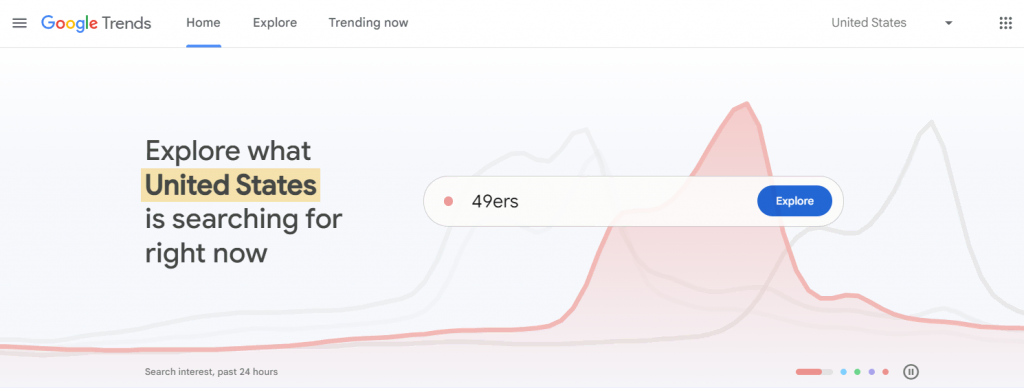
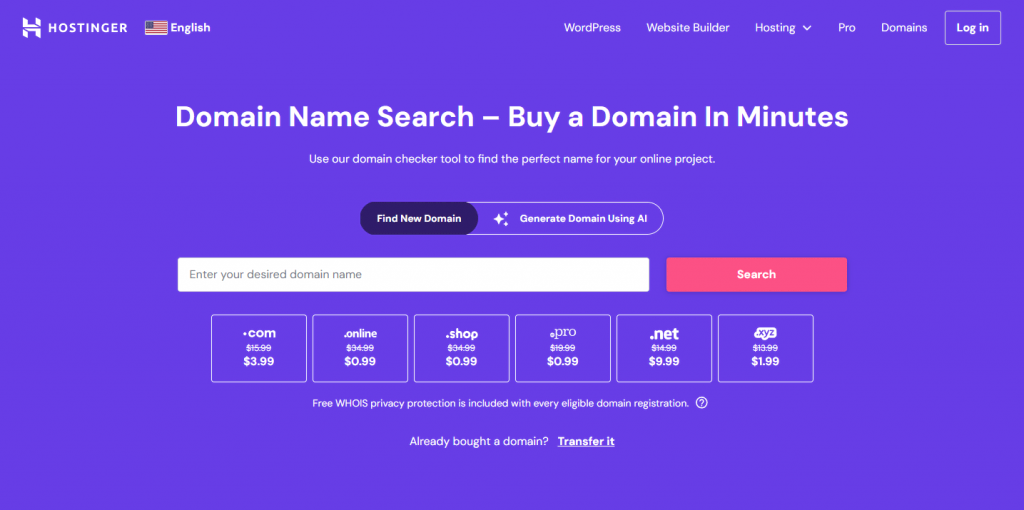
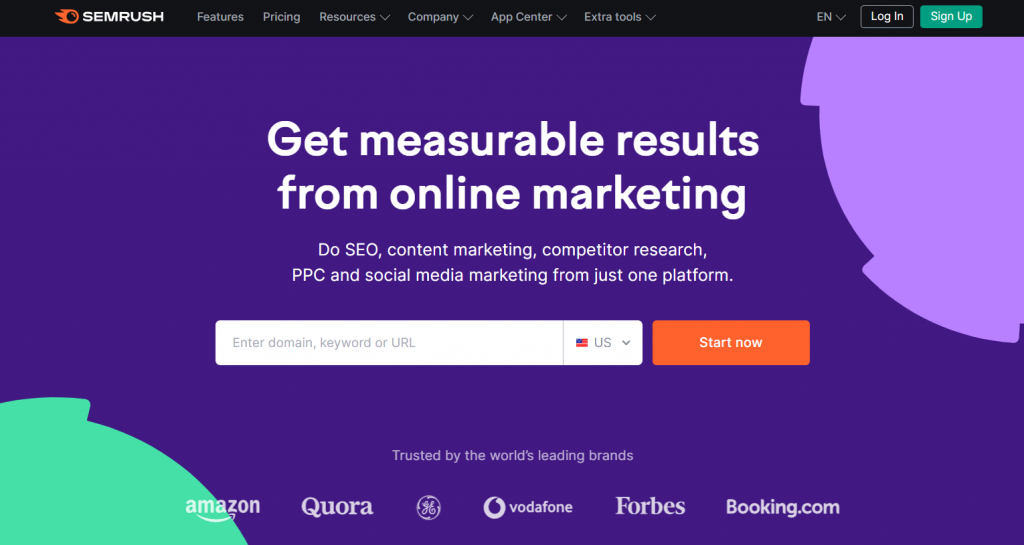
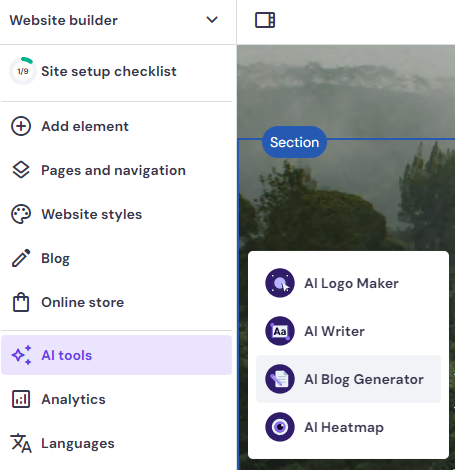
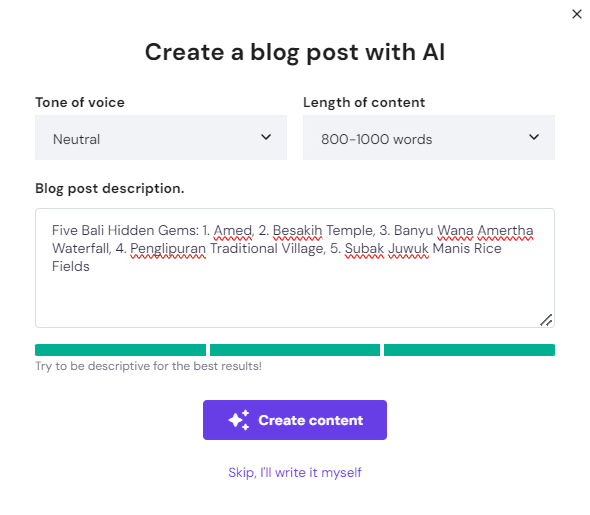

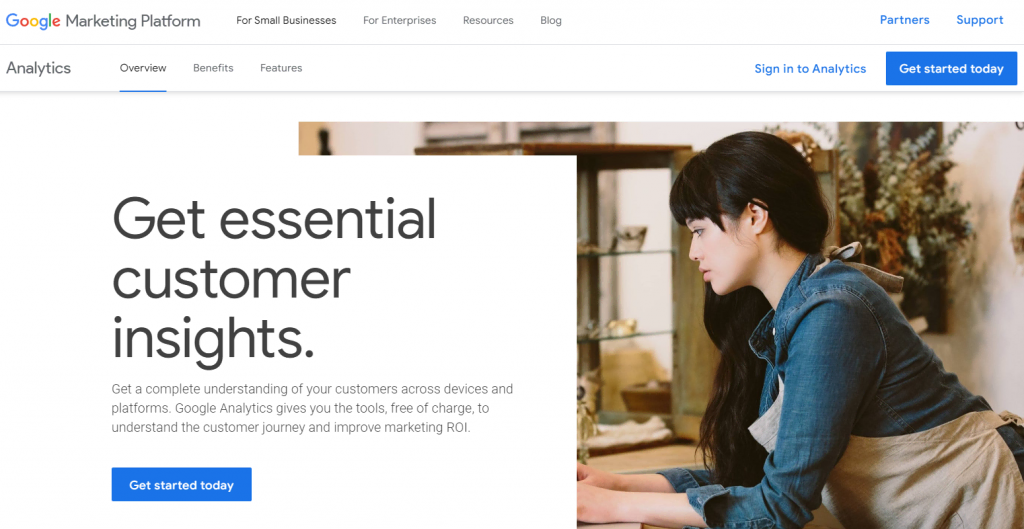



Comments
October 17 2023
thanks for the knowledge about this,I'm a beginner and I want to join the program
October 27 2023
You're very welcome! It's great to hear that you want to start your journey in affiliate marketing ?
October 18 2023
My name Daniel Thomas , I want start affiliate marketing,,I am a beginner ,I will i start earning and which best product can showcase.
October 27 2023
Hello there! I recommend exploring the best affiliate marketing program that suit your needs. Best of luck on your journey ??
October 24 2023
I really like this marketing and I hope it pay me
October 30 2023
Hi there! I'm glad you're interested in affiliate marketing! It's a great way to make money online, and it's relatively easy to get started ?
November 11 2023
I want to start today
November 14 2023
That's fantastic to hear! Best of luck ??
November 11 2023
I am interested
November 14 2023
That's great to hear! Affiliate marketing can be a rewarding venture. Wishing you success in your affiliate marketing journey! ?
November 15 2023
Am a begginer and I want to earn more through affliate marketing
November 16 2023
Great to hear you're interested in affiliate marketing! Keep learning and adapting your strategies. Good luck ☘️
December 04 2023
I am very interesting to continue with you for online business and I can do it.
December 05 2023
That's fantastic to hear! ?